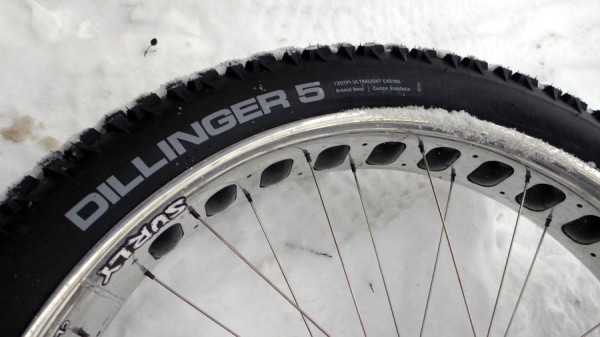
It’s the middle of prime fat-biking season here in Minnesota, and that means a lot of fat bike parts reviews. Sure, the big-tired monsters might be getting trendy, but anything that allows us to ride year-round in the snowy climes is surely allowed a pass. 45NRTH introduced the Dillinger 5 earlier this year as a wider version of the popular Dillinger model (now Dillinger 4). 45NRTH may have been the first company to produce a performance-oriented fat bike tire when they debuted the Husker Du in 2011, and since then, all of their models have brought some of the modern tech of MTB tires over to the fat bike world.
The Dillinger tire came about with the idea of a high-performance tire, but with a little more aggressive knobs, and stud pockets to allow for custom studding (or you can buy it complete with studs preinstalled). The Dillinger 5 carries all of those traits through to a wider profile to fit the modern crop of fat bikes with 190/197mm rear spacing that can accept the really big tires.
Take a look inside to see how the Dillinger 5 can help you make out like a bandit on your next ride…
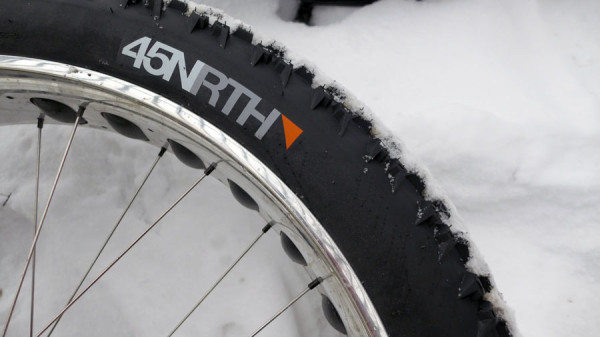
45NRTH only sells the Dillinger 5s in a 120tpi folding casing, and you have the option of having them fully studded with 258 carbide-tipped trail biters, or without any studs, so that you can add them yourself later. I chose the stud-less variety, mostly because I like to custom-stud my tires with a stagger pattern that does not use all the holes, as in my experience on Dillinger 4s, that many studs is just insane unless you are riding on skating rinks. Like the namesake bank robber, the Dillinger can take $160 out of your wallet for each standard tire, and a whopping $250 for the studded version.
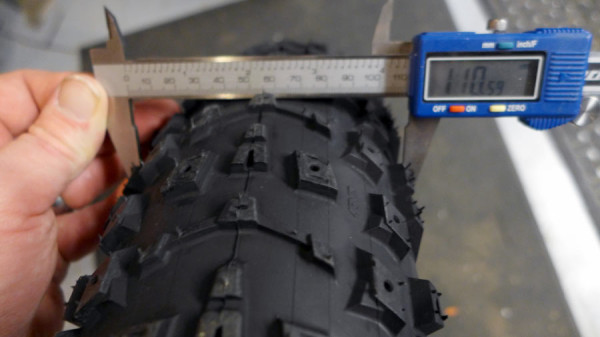
The Dillinger 5s measured in at 110.5mm wide on a Surly Clownshoe rim, or about 4.35″. While called the “5”, 45NRTH does not claim them to be 5″ wide, but rather 4.8″ (and the Dillinger 4 is claimed at 3.8″). However, not even claiming to be the full 5″, they still fell way short of the 4.8″ specification. Although this will send a few people looking elsewhere, it may also open the door to a few folks who have 170/177mm spaced frames, as this width may fit into many of those bikes.
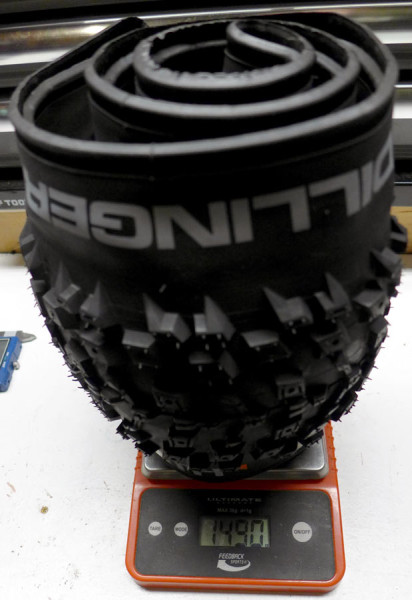
The Dillinger 5s came in at 1,490 grams, without studs. These are not lightweight tires, but they are fully featured, and the weight comes with a benefit. Yes, you can feel the weight when riding, especially since right before these, I had the Schwalbe Jumbo Jims on the Ice Cream Truck, so these hefty meats added almost 2lbs to the bike.
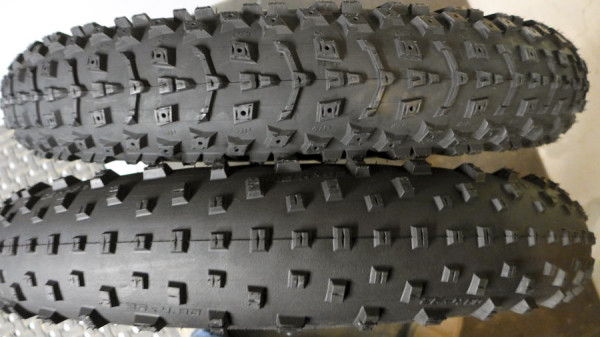
The 45Nrth Dillinger 5 came in almost exactly the same width as the Schwalbe Jumbo Jim, when both were mounted to a Surly Clownshoe 100mm wide rim. Looking at them side by side, you can see why the Dillinger 5 is so much heavier, from a non-scientific visual measurement, it appears to have almost double the amount of knobs. Plus, they are studdable, earning some big bonus points. And while that weight could be felt, the Dillinger outperforms the Jumbo Jim, because it grabs the ground and holds on tight.
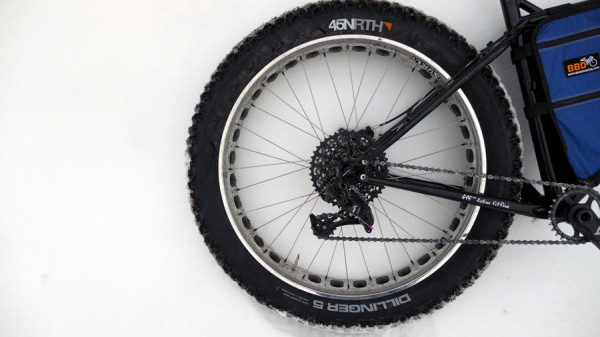
So how did they ride? Pretty good, especially considering hauling around the extra weight. The available traction of the tire was never lacking, and they roll fast. Local conditions on the fat bike trails could be described as “hero snow”, where maximum float is not needed, and the pack is so good it’s possible to ride the trails as fast as in the summer. There has been a bit of ice, so I added about 100 studs to each of the tires, staggering the rear, and studding the outside knobs of the front. By adding a few studs, there is some security to always stay upright if a slick spot shows up, and a bit of a traction aid to climb up some pretty steep switchbacks. Fat biking has become so popular here, that trails are well ridden in now, and we ride all of the exact same trails we do in the summer. The only downside is sometimes the trails might be a bit too steep to ride with a fat bike, making it harder to keep traction on the snow that is quite a bit looser than dirt. With the 45NRTH Dillinger 5s, I did not have this problem, and as long as I kept my weight distributed on the bike right, I could climb anything I would normally climb in the summer.